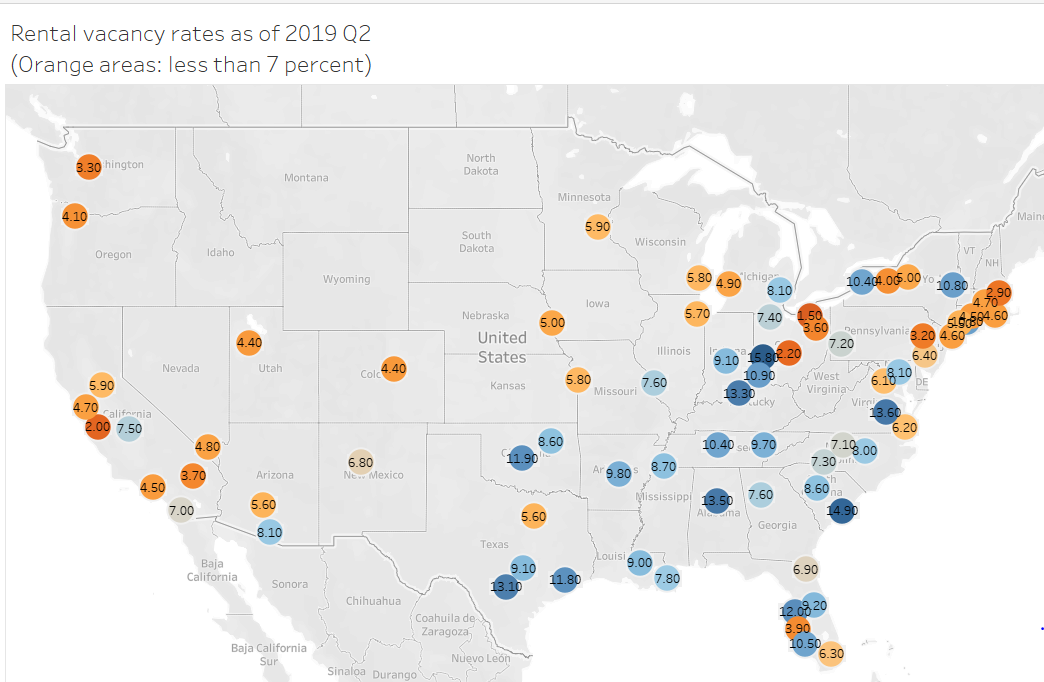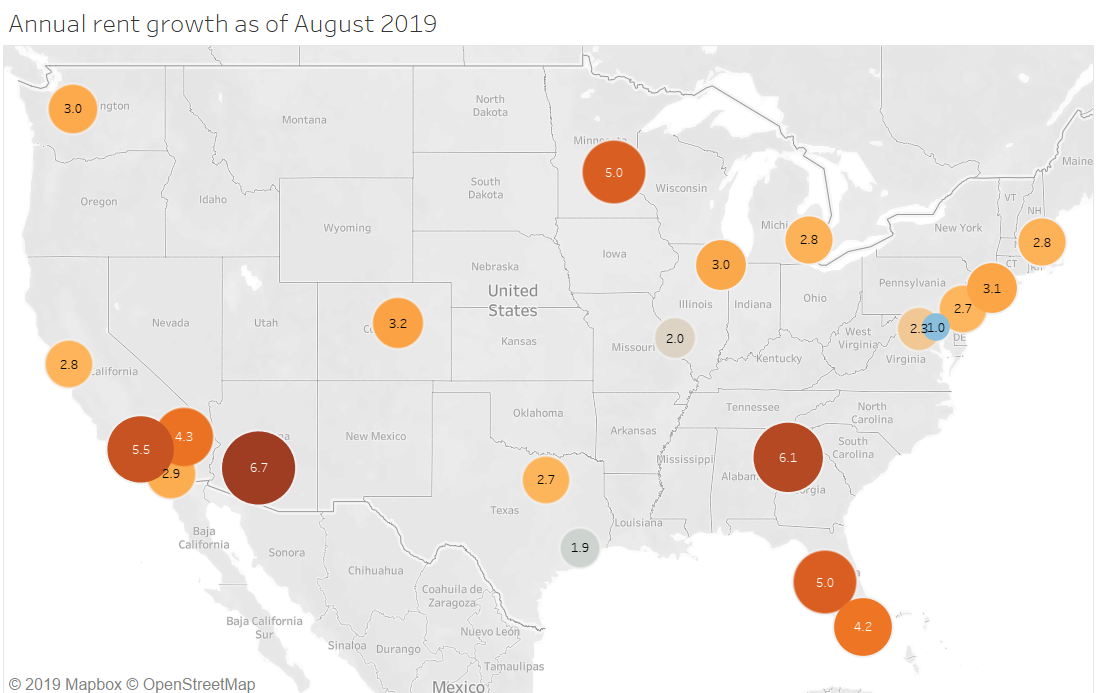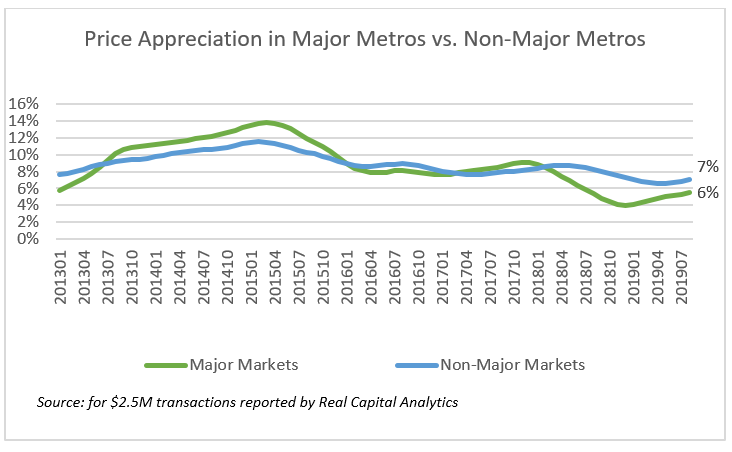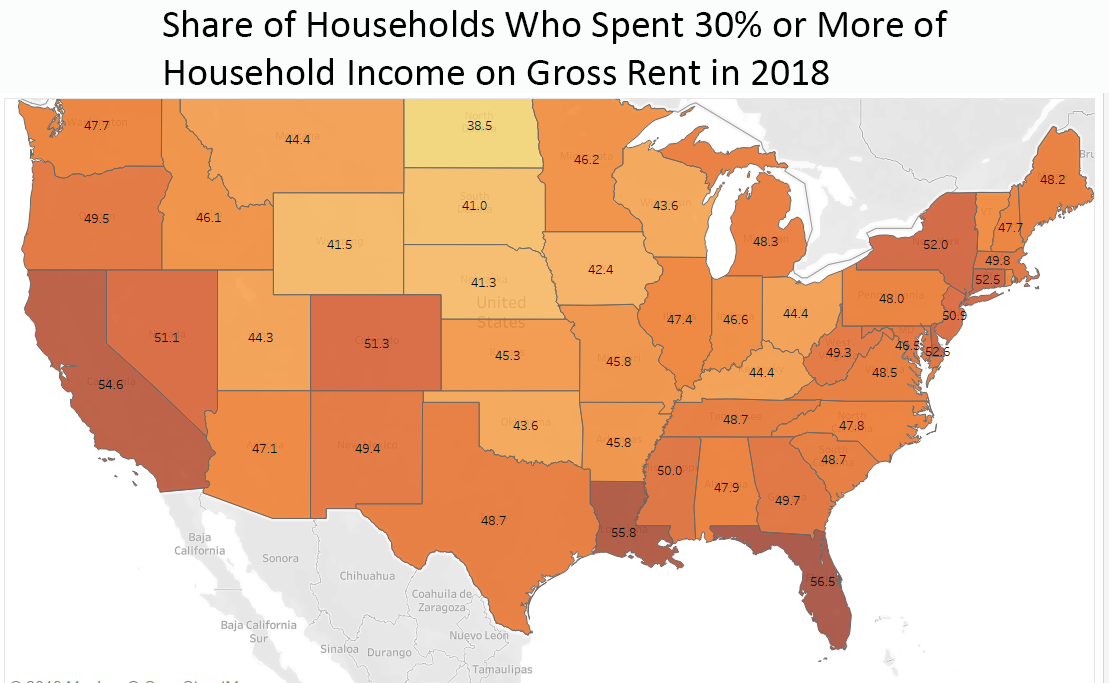Rising Rents: a Boon to Commercial Investors but a Bane for Renters
In the small commercial market (less than $2.5 M) that most REALTORS® do business in, REALTORS® reported strong sales and leasing activity for multifamily and industrial properties according to the 2019 Q3 Commercial Real Estate Trends & Outlook Report. The multifamily market had the lowest median going-in cap rate, at 5.9%, followed by industrial warehouse, at 6.5%. Retail strip centers had the highest cap rate, at 7.1%. A low cap rate means that investors are willing to pay a higher price for the property, based on projections of net operating income (low cap rate=high price).
| Cap Rates in 2019 Q3 | ||||||||||||||
|
||||||||||||||
| Source: 2019 Q3 NAR CRE Market Survey | ||||||||||||||
| For $2.5 million or less properties |
In the multifamily market, low rental vacancy rates continue to push rents up, which, for investors, means higher demand for apartments and high net operating income. In 2019 Q2, the national rental vacancy rate was 6.8%, well below the 9% rate in 2012, according to data from the US Census Bureau. Multifamily rental vacancy rates were extremely low in many metro areas in California: San Jose-Sunnyvale (2%), Riverside-San Bernardino (3.7%), Los Angeles-Long Beach-Anaheim (4.5%), and San Francisco-Oakland (4.7%).
With low rental vacancy rates, rents have increased at a pace faster than the national wage growth of 3% in major metro areas, with the highest rent growth in Phoenix, Arizona (6.7%), Atlanta-Sandy-Springs (6.1%), and Los Angeles-Long Beach-Anaheim (5.5%), according to data from the U.S. Census Bureau.
Real Capital Analytics reported that since early 2018, commercial properties in the non-major markets have posted stronger price gains (7%) compared to those in the major markets (6%) that includes Boston, New York City, Washington DC, Chicago, San Francisco, and Los Angeles (Real Capital Analytics categorization). This trend indicates that the strong price growth in expensive metro areas is spilling over into the non-major metro areas as people move to other metro areas.
While rising rents are attractive to commercial investors, increasing rents are causing serious affordability problems for renters, prompting the states of California, Oregon, and New York to pass state-wide rent control measures. The U.S. Census Bureau’s 2018 American Community Survey found that in 2018, 49.7% of renter households spend at least 30% of income on gross rent, up from 45.5% in 2017. Ten states had at least half of households spending at least 30% of income on rent: Florida (56.5%), Louisiana (55.8%), California (54.6%), New York (52%), Delaware (52.6%), Connecticut (52.5%), New Jersey (50.9%), Colorado (51.3%), Nevada (51.1), Mississippi (50%).
Long-term solutions to easing the rent burden are to increase the supply of affordable rental housing through measures such as inclusionary zoning with density bonuses to make the project viable, streamlining the approval process, setting up housing trust funds, allowing more density in single-family zoned areas, and providing other financial incentives to developers.




No comments